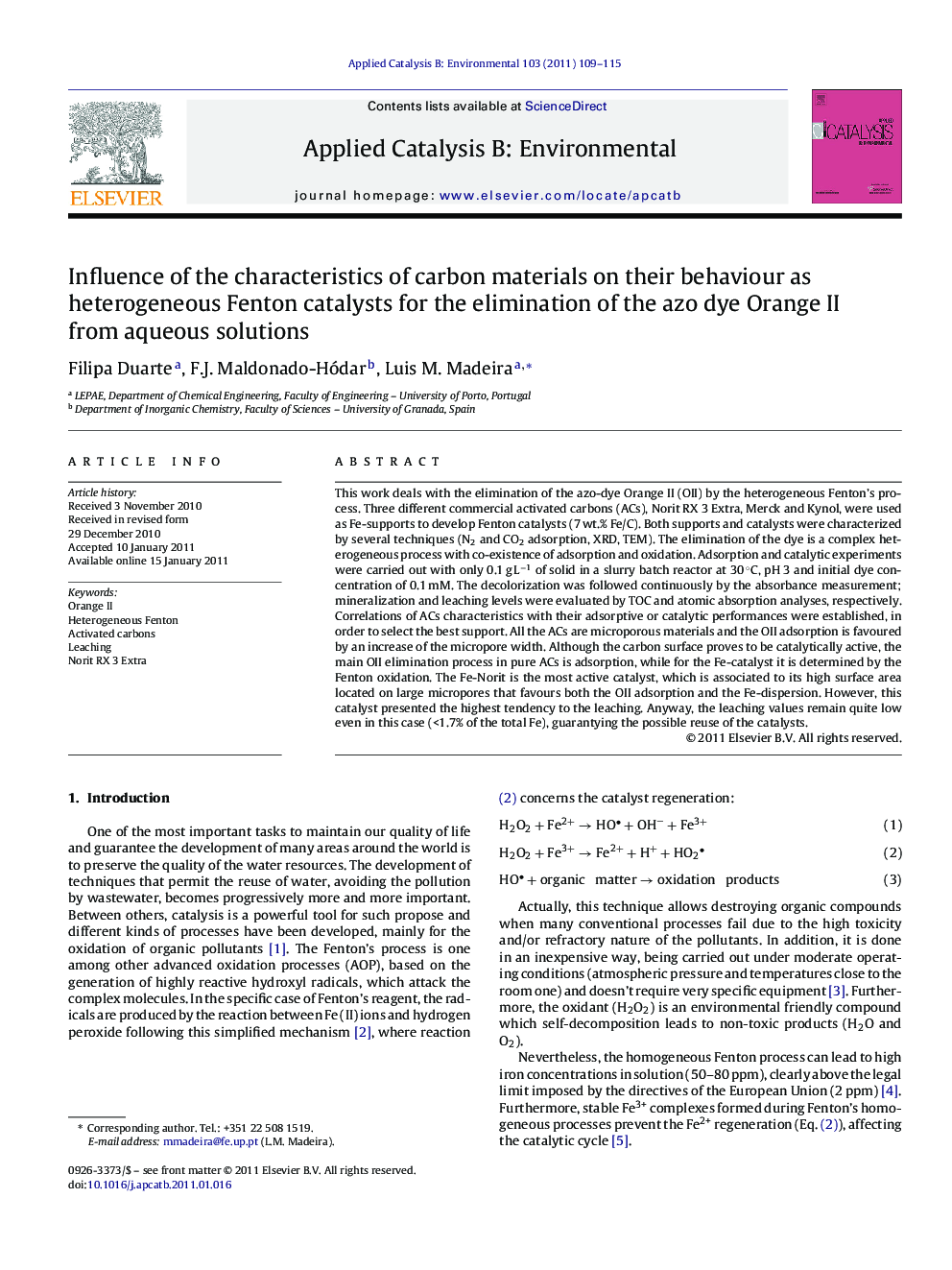| کد مقاله | کد نشریه | سال انتشار | مقاله انگلیسی | نسخه تمام متن |
|---|---|---|---|---|
| 46999 | 46455 | 2011 | 7 صفحه PDF | دانلود رایگان |

This work deals with the elimination of the azo-dye Orange II (OII) by the heterogeneous Fenton's process. Three different commercial activated carbons (ACs), Norit RX 3 Extra, Merck and Kynol, were used as Fe-supports to develop Fenton catalysts (7 wt.% Fe/C). Both supports and catalysts were characterized by several techniques (N2 and CO2 adsorption, XRD, TEM). The elimination of the dye is a complex heterogeneous process with co-existence of adsorption and oxidation. Adsorption and catalytic experiments were carried out with only 0.1 g L−1 of solid in a slurry batch reactor at 30 °C, pH 3 and initial dye concentration of 0.1 mM. The decolorization was followed continuously by the absorbance measurement; mineralization and leaching levels were evaluated by TOC and atomic absorption analyses, respectively. Correlations of ACs characteristics with their adsorptive or catalytic performances were established, in order to select the best support. All the ACs are microporous materials and the OII adsorption is favoured by an increase of the micropore width. Although the carbon surface proves to be catalytically active, the main OII elimination process in pure ACs is adsorption, while for the Fe-catalyst it is determined by the Fenton oxidation. The Fe-Norit is the most active catalyst, which is associated to its high surface area located on large micropores that favours both the OII adsorption and the Fe-dispersion. However, this catalyst presented the highest tendency to the leaching. Anyway, the leaching values remain quite low even in this case (<1.7% of the total Fe), guarantying the possible reuse of the catalysts.
Figure optionsDownload as PowerPoint slideResearch highlights
► Azo-dye Orange II is degraded by a complex heterogeneous Fenton process, where adsorption and oxidation co-exist.
► Three commercial activated carbons (Norit RX 3 Extra, Merck and Kynol) were studied as Fenton catalysts (impregnated with 7 wt.% of iron).
► Activated carbons’ performance depends on their textural properties, and in this case, mainly on the size of the micropores and metal dispersion.
► Norit activated carbon showed to have the more appropriate textural properties for the removal of OII from aqueous solution, either by adsorption or by a catalytic Fenton-like process.
Journal: Applied Catalysis B: Environmental - Volume 103, Issues 1–2, 14 March 2011, Pages 109–115